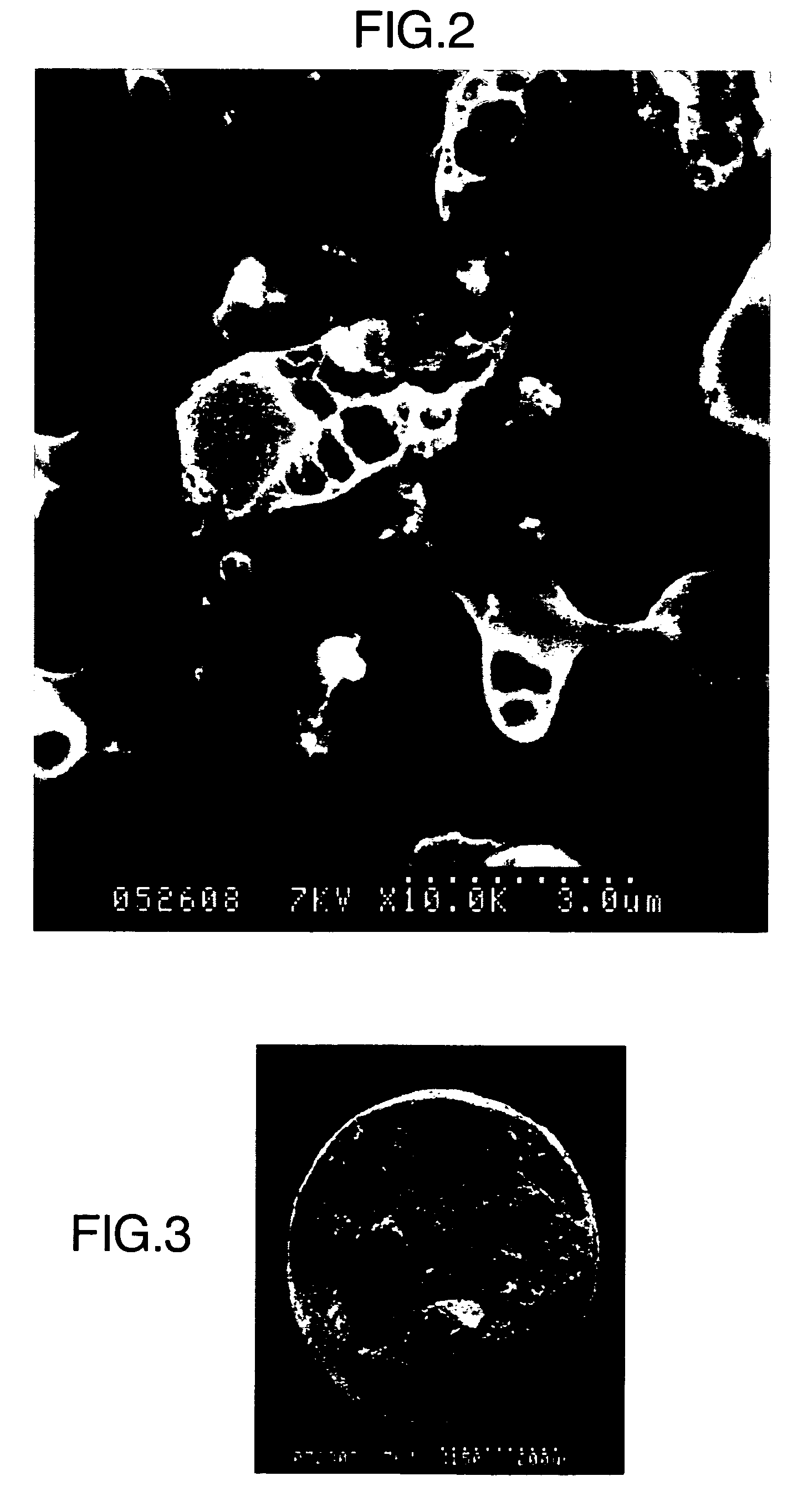Porous formed article and method for production thereof
- Summary
- Abstract
- Description
- Claims
- Application Information
AI Technical Summary
Benefits of technology
Problems solved by technology
Method used
Image
Examples
production example 1
Production for Powder of Hydrated Ferrite of Zirconium
[0225] One liter of 0.15 mol aqueous solution of zirconium sulphate was prepared. The solution contained metallic ions of 13.7 g as zirconium. Ferrous sulfate crystal (FeSO4.7H2O) in an amount of 84.0 g was added and dissolved into the aqueous solution which was being stirred. The amount of added ferrous sulfate corresponds to 0.3 mol of ferrous ions. Next, 15 wt. % sodium hydroxide solution was added dropwise to the aqueous solution which was being stirred, till the pH of the solution reached 10, and then a bluish green precipitate was produced. Subsequently, air was blown into the aqueous solution which was being kept at 60° C., at the flow rate of 10 liter / hour. When air is continuously blown into the solution, the pH of the aqueous solution decreases. When it happened, the 15 wt. % sodium hydroxide solution was added dropwise into the aqueous solution to keep it to pH of 9.5 to 10. After air had been continuously blown into ...
production example 2
Production for Powder of Hydrated Cerium Oxide
[0226] Ceric sulfate in an amount of 0.2 mols and ammonium sulfate in an amount of 0.5 mol were dissolved in 2 liters of distilled water which was being stirred. Subsequently, ammonia water was added to adjust the pH of the solution to 9, and a precipitate was obtained. The solution was matured overnight and was filtrated, and the precipitate was washed with deionized water till a filtrate became neutral, and then was dried at 60° C. The dried precipitate was pulverized in a ball mill for seven hours, and the powder of the hydrated cerium oxide with an average particle diameter of 2.0 μm was obtained.
example 1
[0227] Ethylene-vinylalcohol copolymer (EVOH, Nippon Synthetic Chemical Industry Co., Ltd., Soarnol E3803 (trade name) in an amount of 10 g, polyvinylpyrrolidone (PVP, BASF Japan Co., Ltd., Luvitec K30 Powder (trade name) in an amount of 10 g and dimethylsulfoxide (DMSO, Kanto Chemical Co., Ltd.) in an amount of 80 g were dissolved in water heated to 60° C. in a separable flask, and a homogenous polymer solution was obtained.
[0228] Into the polymer solution in an amount of 100 g, the powder of the inorganic ion absorbing material in an amount of 92 g prepared in Production Example 1 was added, and the mixture was adequately mixed to form slurry.
[0229] The obtained composite macromolecule slurry was heated to 40° C. and supplied into a cylindrical rotating vessel having a nozzle with a diameter of 5 mm opened on the side face. Then, the vessel was rotated to form a droplet through the nozzle by a centrifugal force (15G), and the droplet was discharged into a solidification bath acc...
PUM
| Property | Measurement | Unit |
|---|---|---|
| Fraction | aaaaa | aaaaa |
| Fraction | aaaaa | aaaaa |
| Solubility (ppm) | aaaaa | aaaaa |
Abstract
Description
Claims
Application Information
 Login to View More
Login to View More - R&D
- Intellectual Property
- Life Sciences
- Materials
- Tech Scout
- Unparalleled Data Quality
- Higher Quality Content
- 60% Fewer Hallucinations
Browse by: Latest US Patents, China's latest patents, Technical Efficacy Thesaurus, Application Domain, Technology Topic, Popular Technical Reports.
© 2025 PatSnap. All rights reserved.Legal|Privacy policy|Modern Slavery Act Transparency Statement|Sitemap|About US| Contact US: help@patsnap.com



